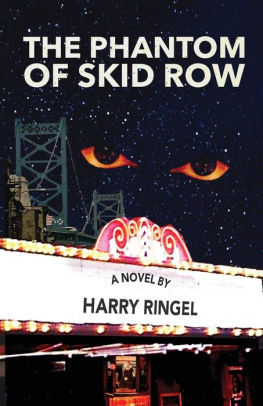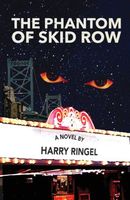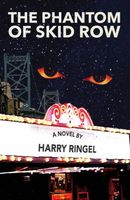- Welcome to FictionDB, Guest
- | My Account
- | Help

The Phantom of Skid Row — Harry Ringel
1965. Young Tito Scaffone loves vintage horror movies more than life itself. He is especially enamored of Lon Chaney's 1925 The Phantom of the Opera-the majesty of the sets, the silent-celluloid beauty of Mary Philbin, but most of all the mastery of Chaney's makeup as the hideously disfigured phantom. But monsters in movies are one thing, in life quite another. And Tito cannot face life. His only friend is Jan Klosek, a good-hearted South Philadelphia roughneck whose uncles run Independent Film Exchange, a distribution hub for low-grade film product. Through IFE Tito is given a chance to manage the Dreamland in the Skid Row section of the city. A century old, the Dreamland hangs on as an all-night movie house. It also happens to be haunted. Living alone at the theater, Tito enters a world of horror more terrifying than any he has encountered in the films he so adores.
The story takes place in the shadow-ridden Philadelphia that inspired David Goodis' existential pulp novels, David Lynch's Eraserhead. Along the way, stops are made at the film domains of Rondo Hatton and Val Lewton, the 50-Foot Woman and 4D man, and others. But Tito's journey into darkness truly begins in the pages of a lost diary kept by the theater's owner in the late 1800's. In these tortured pages, Tito unmasks the true face of the Dreamland's horror.
The Phantom of Skid Row is a ghost story, of sorts. It is also a love letter to the magic of classic and not-so-classic movies; to the eccentric charms of film exhibition in the days before theaters became homogenized; to the mystery of love in sheltered young hearts.
The story takes place in the shadow-ridden Philadelphia that inspired David Goodis' existential pulp novels, David Lynch's Eraserhead. Along the way, stops are made at the film domains of Rondo Hatton and Val Lewton, the 50-Foot Woman and 4D man, and others. But Tito's journey into darkness truly begins in the pages of a lost diary kept by the theater's owner in the late 1800's. In these tortured pages, Tito unmasks the true face of the Dreamland's horror.
The Phantom of Skid Row is a ghost story, of sorts. It is also a love letter to the magic of classic and not-so-classic movies; to the eccentric charms of film exhibition in the days before theaters became homogenized; to the mystery of love in sheltered young hearts.
Genres
Themes
People / Creatures
Click on any of the links above to see more books like this one.


